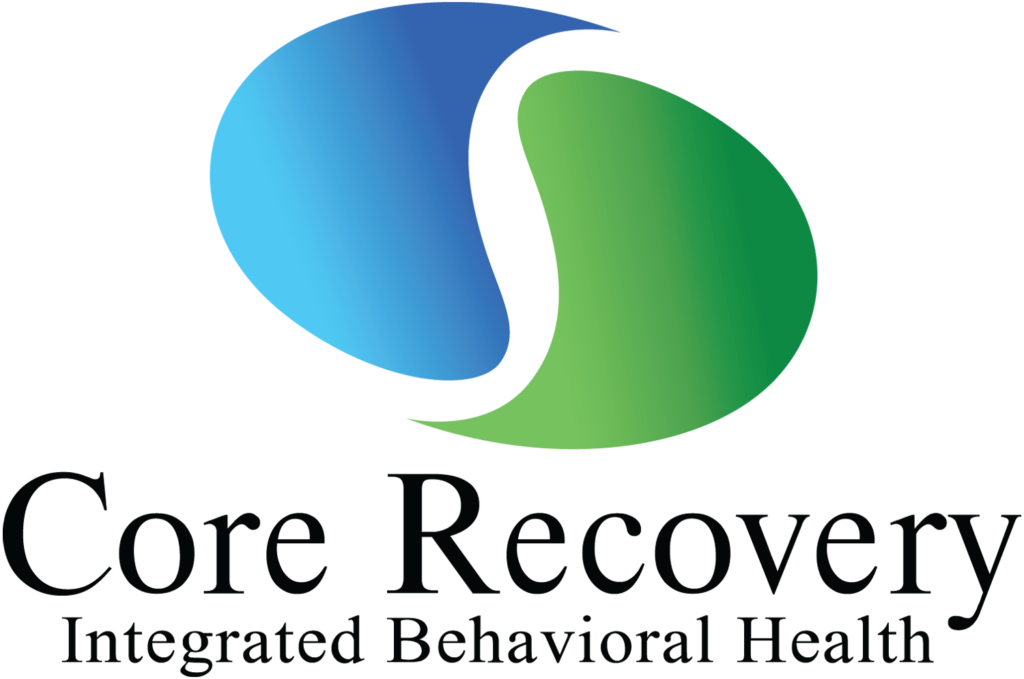Mental health and well-being are crucial aspects of our overall health. With life’s daily stressors, it can be challenging to maintain a healthy state of mind. That’s where Dialectical Behavior Therapy (DBT) mindfulness activities come in. DBT mindfulness is a technique that helps people to develop a non-judgmental, accepting, and curious attitude toward their thoughts and emotions. Focusing on the present moment, DBT mindfulness can help individuals improve their emotional regulation, reduce stress and anxiety, and enhance their overall well-being.
In this blog, we will explore the concept of DBT mindfulness activities and discuss the benefits of practicing these techniques for mental health. We will also provide practical tips and strategies for incorporating DBT mindfulness into your daily routine. Whether you’re looking to reduce stress and anxiety or improve your emotional regulation, this blog will provide valuable insights into how DBT mindfulness can empower your mental health and help you achieve a more balanced and fulfilling life.
Understanding DBT Mindfulness Activities
Dialectical Behavior Therapy (DBT) mindfulness is a powerful tool for improving mental health and well-being. This blog section will delve deeper into DBT mindfulness, explore the different types of DBT mindfulness activities, and discuss how they can help improve mental health.
DBT mindfulness is a technique that involves focusing on the present moment without judgment or distraction. It is a form of meditation that helps individuals develop self-awareness and acceptance of their thoughts, emotions, and bodily sensations. DBT mindfulness is a core component of Dialectical Behavior Therapy, often used to treat mood disorders, borderline personality disorder, and other mental health conditions.
Different Types Of Dbt Mindfulness Activities
There are many different types of DBT mindfulness activities, each with its unique focus and purpose. Some of the most common types of DBT mindfulness activities include:
Mindful Breathing: This involves focusing on the sensations of breathing, such as the rise and fall of the chest and the sense of air moving in and out of the body. It helps individuals to become more aware of their breath and to use it as an anchor for staying present at the moment.
Body Scan Meditation: This involves systematically scanning the body from head to toe, paying attention to any areas of tension, discomfort, or pain. Body scan meditation helps individuals to become more aware of their bodily sensations and to release any physical strain or stress.
Observing Thoughts And Emotions: This involves observing thoughts and emotions without judgment, simply noticing them as they arise and letting them go. This helps individuals to become more aware of their internal experiences and to develop a more accepting and non-judgmental attitude towards their thoughts and feelings.
Wise Mind Visualization involves imagining an intelligent, compassionate, and confident version of oneself and focusing on that image during meditation. Smart mind visualization helps individuals to tap into their inner wisdom and strength and to approach life’s challenges with a more balanced and centered mindset.
Radical Acceptance Exercises: This involves accepting things as they are, without judgment or resistance. Extreme acceptance exercises help individuals to let go of the struggle against reality and embrace the present moment with openness and acceptance.
Dbt Mindfulness Activities Help With Mental Health
DBT mindfulness activities can have many positive effects on mental health and well-being. Some of how DBT mindfulness activities can help include the following:
Improved Emotional Regulation: By becoming more aware of one’s thoughts and emotions, individuals can learn to regulate emotional responses more effectively.
Reduced Stress And Anxiety: DBT mindfulness activities can help individuals to reduce stress and anxiety by bringing their attention to the present moment and cultivating a sense of calm and relaxation.
Enhanced Self-Awareness And Insight: By observing their thoughts and emotions without judgment, individuals can better understand themselves and their internal experience.
Better Interpersonal Relationships: By developing a more accepting and compassionate attitude towards oneself, individuals can create more positive and fulfilling relationships with others.
Increased Sense Of Well-Being: DBT mindfulness activities can help individuals to feel more present, centered, and balanced, leading to an increased sense of well-being and overall satisfaction with life.
Benefits Of Dbt Mindfulness Activities For Mental Health
DBT mindfulness activities have been shown to have numerous benefits for mental health. We will explore some of the key benefits of practicing DBT mindfulness activities.
Improved Emotional Regulation: One of the primary benefits of DBT mindfulness activities is improved emotional regulation. By practicing mindfulness, individuals can learn to identify and respond to emotions more constructively and adaptively. Mindfulness techniques can help individuals become more aware of their emotional triggers and develop greater control over their emotional reactions, leading to a greater sense of emotional stability and balance.
Reduced Stress And Anxiety: Research has shown that practicing mindfulness can reduce stress and anxiety levels. Mindfulness can help individuals develop a greater awareness of their thoughts and emotions, allowing them to respond to stressors more adaptively and effectively. By reducing stress and anxiety, mindfulness can help individuals feel more calm, centered, and in control.
Enhanced Self-Awareness And Insight: Another critical benefit of DBT mindfulness activities is enhanced self-awareness and insight. By practicing mindfulness, individuals can develop a greater awareness of their thoughts, feelings, and behaviors, leading to a deeper understanding of themselves and their motivations. This increased self-awareness can help individuals make more informed and intentional choices, leading to a greater sense of purpose and direction in life.
Better Interpersonal Relationships: DBT mindfulness activities can also positively impact interpersonal relationships. By practicing mindfulness, individuals can develop greater empathy and compassion for others, leading to more meaningful and fulfilling relationships. Additionally, mindfulness can help individuals communicate more effectively and resolve conflicts constructively and collaboratively.
Increased Sense Of Well-Being: Practicing DBT mindfulness activities can lead to an increased sense of well-being. By reducing stress and anxiety, enhancing self-awareness and insight, and improving interpersonal relationships, mindfulness can help individuals feel more fulfilled and satisfied with their lives. Mindfulness can help individuals cultivate tremendous gratitude and appreciation for the present moment, leading to greater joy and contentment.
Techniques For Practicing Dbt Mindfulness Activities
In the previous section of this blog, we discussed the concept of DBT mindfulness activities and their benefits for mental health. This section will delve deeper into some specific techniques for practicing DBT mindfulness activities.
Mindful Breathing
Mindful breathing is a simple and effective technique for practicing DBT mindfulness. To practice conscious breathing, find a quiet place to sit comfortably and focus on your breath. Close your eyes, take a deep breath through your nose, and then exhale slowly through your mouth. As you breathe, focus your attention on the sensation of the air moving in and out of your body. If your mind wanders, notice the thought or distraction and gently bring your attention back to your breath.
Body Scan Meditation
Body scan meditation is a technique for bringing awareness to your body and releasing physical tension. To practice body scan meditation, lie down on your back in a comfortable position, and close your eyes. Begin by focusing on your breath, then slowly scan your body from head to toe, paying attention to any tension, discomfort, or pain areas. As you notice any anxiety or distress, take a deep breath, and exhale slowly, imagining the stress leaving your body with each breath.
Observing Thoughts And Emotions
Observing thoughts and emotions is a technique for developing self-awareness and acceptance of your internal experience. To practice observing thoughts and feelings, find a quiet place to sit comfortably and focus on your thoughts and emotions. As thoughts and emotions arise, notice them without judgment or attachment and then let them go. You can imagine your thoughts and feelings as clouds pass across the sky or as leaves float down a stream.
Wise Mind Visualization
Wise mind visualization is a technique for connecting with your inner wisdom and strength. To practice intelligent mind visualization, find a quiet place to sit comfortably and imagine a wise, compassionate, and confident version of yourself. Focus on this image during meditation, and imagine yourself embodying these qualities daily.
Radical Acceptance Exercises
Radical acceptance exercises are a technique for accepting things as they are, without judgment or resistance. To practice extreme acceptance exercises, find a quiet place to sit comfortably and focus your attention on a situation or circumstance that is causing you distress. Instead of fighting against or trying to change this situation, accept it as it is, without judgment or resistance. Practice letting go of any thoughts or emotions that arise, and focus on getting to the present moment.
Incorporating Dbt Mindfulness Activities Into Daily Life
Incorporating DBT mindfulness activities into your daily life can be a powerful way to improve your mental health and well-being. However, making mindfulness a habit can be challenging, especially if you have a busy schedule or find it difficult to stay consistent with your practice. In this section of the blog, we will explore some tips and strategies for incorporating mindfulness activities into your daily routine and some practical examples to get you started.
Tips For Making Mindfulness A Habit
Start Small: Begin by practicing mindfulness for just a few minutes each day and gradually increase the duration over time.
Set A Regular Time: Choose a specific time to practice mindfulness and make it a consistent part of your daily routine.
Use Reminders: Set reminders on your phone or place reminders in visible locations to help you remember to practice mindfulness.
Be Kind To Yourself: Don’t get discouraged if you miss a day or struggle to stay consistent. Remember that mindfulness is a practice, and it takes time to develop.
Strategies For Incorporating Mindfulness Activities Into Your Routine
Incorporate mindfulness into your activities: You can practice mindful breathing while waiting in line or body scan meditation while lying in bed.
Take Breaks Throughout The Day: Take short breaks to practice mindfulness. This can be as simple as taking a few deep breaths or practicing a brief visualization exercise.
Make Mindfulness A Part Of Your Daily Routine: Set aside time each day for formal mindfulness practice, such as meditation or yoga.
Practical Examples Of Incorporating Mindfulness Into Daily Life:
- Mindful Eating: Take time to savor each bite of your meal, noticing the texture, flavor, and aroma of the food.
- Mindful Walking: Take a mindful walk, paying attention to the sights, sounds, and sensations of your surroundings.
- Mindful Breathing: Practice mindful breathing exercises throughout the day, such as taking five deep breaths before responding to an email.
- Mindful Listening: Practice active listening by focusing on the person speaking and trying to understand their perspective without judgment.
DBT mindfulness activities can be an effective tool for improving your mental health and overall well-being. Practicing mindfulness techniques such as mindful breathing, body scan meditation, and radical acceptance exercises can improve emotional regulation, reduce stress and anxiety, enhance self-awareness and insight, improve interpersonal relationships, and increase your sense of well-being. Incorporating mindfulness into your daily routine can be challenging. Still, you can develop a consistent mindfulness practice by starting small and using strategies such as setting reminders and integrating mindfulness into activities you already do. We encourage you to try DBT mindfulness activities and see their positive impact on your mental health. Contact us today at 602-810-1210 or visit our website at www.corerecoveryaz.com for more information on how to get started.





